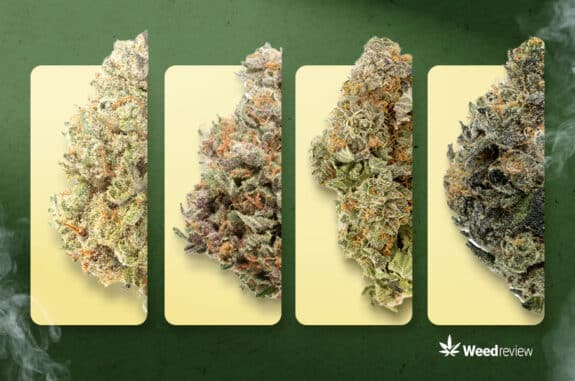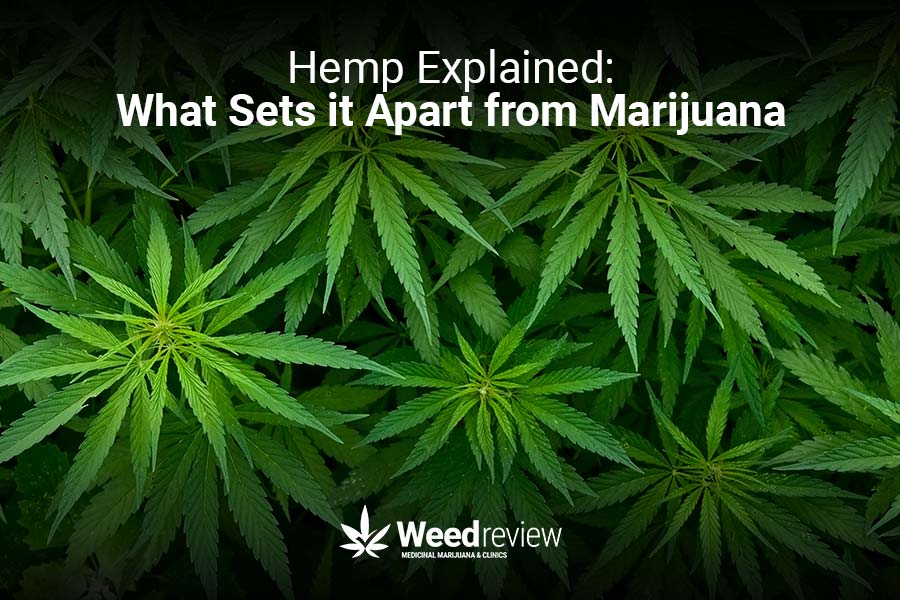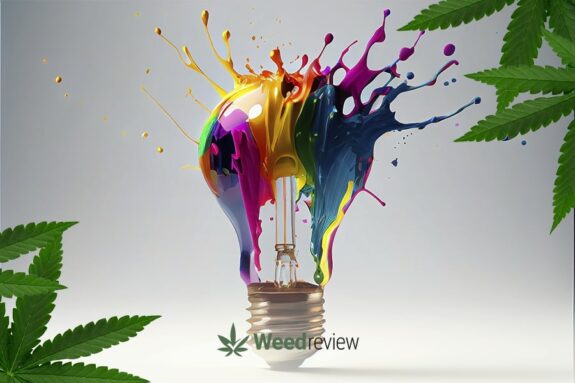
Hemp Simplified: What is it, and how is it Different from Marijuana?

Table of Contents
Many people in Thailand believe that hemp and marijuana are the same thing. Technically, this is true – both belong to the cannabis sativa species, but there is a slight difference. Hemp is non-psychotropic, while marijuana is famously known for its mind-altering effects.
Hemp, in fact, is a wonderful, versatile plant that humans have grown for thousands of years for a variety of purposes. Even in Thailand, hemp has a rich history – from its medicinal value to its use in making rope, fibres, food, and clothing items.
Weed Review presents a simple overview of what hemp is and why this plant is returning into today’s legal cannabis industry in Thailand.
What is hemp?
Simply put, hemp is a variety of cannabis sativa species which does not contain more than a certain amount of tetrahydrocannabinol (THC) by dry weight.
In the Western world, this amount is capped at 0.3 percent, while in Thailand, hemp is defined as cannabis sativa plants with less than 1 percent THC by dry weight in its leaves and inflorescence.
This magic number of 0.3% or 1% – which some might even consider being random – separates hemp from marijuana/weed/cannabis buds that get you high. Effectively, it is a matter of legal semantics to regulate the psychoactive part of cannabis that people so enjoy.

Scientifically speaking, there is no significant difference between hemp and marijuana as they both come under the Cannabaceae family of plants. It all comes down to the THC concentration. If the cannabis plant has more than 0.3% or 1% THC in it, it is marijuana.
What are the features of hemp?
Hemp is unlike any other plant because of its broad versatility. Mentioned here are a few key features of the hemp plant that have made it a valuable natural herb.
- It is fast growing; hemp plants can mature within three to four months.
- They are tall and skinny; they can grow up to 4 metres.
- It can grow with minimal pesticides and herbicides, making it more eco-friendly than other plants.
- Hemp is non-intoxicating. Since it contains very low levels of THC, consuming it will not get you high.
- Hemp has high cannabidiol (CBD) levels. CBD is the non-psychoactive cousin of THC with a diverse spectrum of health benefits. Hemp plants are known to be CBD-rich, making them a productive resource for making CBD oils.
- Hemp seeds are highly nutritious, featuring high levels of proteins, vitamins, essential fatty acids, and minerals. This has led to hemp being used as a food source and in traditional medicinal remedies.
- Hemp plants can be used to make textiles and building materials.
- Hemp is easy to grow and does not require a lot of attention. It is adaptable to different conditions, giving local communities a source of nourishment and raw materials.
Growing conditions for hemp
One of the reasons why hemp has always been popular in Thailand is owing to its climate.
Hemp thrives in moderate temperatures with average to plenty of rainfall – all of which Thailand is well known for. The plant also requires plenty of sunlight – a minimum of 6 hours a day – which is once again quite abundant in the country.
In a way, Thailand’s geography has enabled cannabis plants to thrive beautifully – which is also why the Thai landrace strains are so well-known globally.
Uses of hemp
It is estimated that the industrial hemp market will generate a revenue of over $18 billion by 2027. This alone should give you an idea of the wide-range applications of the hemp plant. The most popular of these are mentioned here.

- Textiles: Hemp fibres are durable, sustainable, and environmentally friendly. They are used to make rope, clothes, bags, shoes, fabrics, carpets, and other products for commercial and industrial purposes.
- Paper: Hemp fibers also form the basis for papers – giving a more sustainable, natural, and organic alternative to the regular paper obtained from trees.
- Biofuel: Hemp is a potential biofuel source owing to the abundance of oil in its seeds and stalks.
- Construction materials: Hempcrete – a concrete-like block made of hemp – is becoming popular in the construction industry. Additionally, it can be used to make fiberboard, insulation, plasters, varnishes, strands, ropes, and wood blocks.
- Automotive parts: Composite panels in several automobiles employ hemp as the raw material; this falls under bioplastics, where hemp forms the basis for biodegradable, durable plastic components.
- Food products: Hemp seeds, protein bars, protein powder, hemp milk, flour substitute, sauces – these food items are highly nutritious and rich in protein.
- Dietary supplements: Hemp seed oil and CBD oil derived from hemp plants are known to have therapeutic properties that promote overall well-being and health.
- Beauty products: Hemp is famous for its moisturising and skin-nourishing properties; hemp seed oil is often used in shampoos, creams, lotions, shower gels, and other cosmetic products.
Hemp in Thailand: A Quick History
Cannabis in Thailand has an intriguing history in Thailand. The plant was likely introduced from India, and locals have used it for various reasons for centuries.
The first prohibition began in the 20th century – around the 1930s – when the Thai government criminalised the possession, cultivation, sale, and use of cannabis. It is worth noting that there was no distinction between hemp and marijuana at the time – it was all weed for the authorities. However, this ban was not strictly enforced, and an underground weed culture continued in Thailand. This continued until the Vietnam War when American soldiers used Thailand as a base of operations. They were introduced to the local weed scene in the form of legendary Thai Sticks.
Thai Sticks proved to be a huge hit; before you knew it, it was being smuggled into the States and elsewhere in massive quantities. This led to Thai farmers growing the plant on a semi-industrial scale, bringing in an influx of cash for really good weed.
After the war in Vietnam ended, the US renewed its war on drugs and brought Thailand into the loop. Once again, the Thai government initiated a crackdown on cannabis – this time in the 1980s and by the 1990s, the once-thriving industry was practically dead.
Modern-day and future outlook
In 2016, the Office of the Narcotics Control Board granted permission for Thai farmers to grow industrial hemp. This liberalisation was likely driven by a decade-long project between the Highland Research and Development Institute (HDRI) and the Royal Project Foundation, which looked at the feasibility of growing and processing hemp. It was originally set up in 2005.
However, much like the present landscape surrounding cannabis legality, there was much left to be desired back then.
Over the next few years, the hemp industry in Thailand began taking shape. It wasn’t until January 2021 that hemp production, import, distribution, export, and possession were legalised; however, the plant was already being cultivated in many parts of the country.
The Thai government realised the potential of cannabis as a cash crop, with a large part of that revenue expected to come from hemp and hemp-derived products. The authorities even approved the cultivation of 4 Thai FDA-approved hemp strains – RPF1, RPF2, RPF3, and RPF4. All of these have a low content of cannabidiol (CBD).
Nonetheless, given that hemp does not contain high levels of the intoxicating chemical THC, its path forward is practically free of resistance. Unlike marijuana, which is facing a long battle for full acceptance, hemp thrives beautifully owing to its wide-scale uses. It is predicted that by 2025, the Thai hemp market will be valued at THB 15.7 billion ($470 million) – but this number will likely increase with time.
Conclusion
The only real difference between hemp and marijuana is the THC concentration by dry weight. In the West, the limit is capped at 0.3%, while in Thailand, it is 1%. Anything under these limits in the cannabis family is hemp, while anything over is weed.
Thailand is witnessing a massive boom in the hemp industry, driven by the relaxed cannabis laws, the country’s facilitative climate to grow the plant, and a lack of psychoactive THC.


